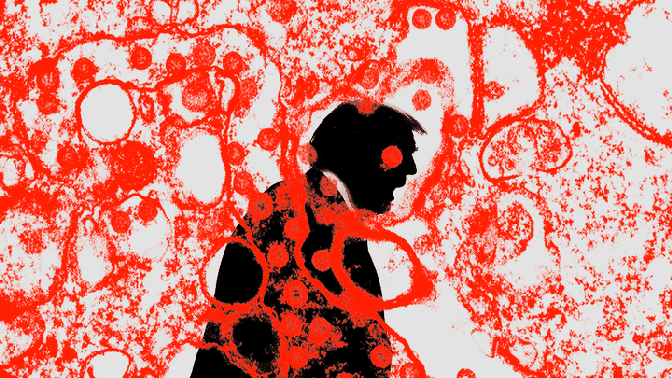Every weekday evening, our editors guide you through the biggest stories of the day, help you discover new ideas, and surprise you with moments of delight. Subscribe to get this delivered to your inbox.

Trump’s role as chief executive is inextricable from his status as an incumbent facing tough reelection prospects. A new uptick in U.S. coronavirus cases raises more questions about his ability to guide the country in this moment.
Below, four writers analyze the state of the coronavirus response, the state of the campaign, and the places where those efforts intersect:
The White House botched its early pandemic response.
If the National Transportation Safety Board investigated it like a plane crash, they’d find that “this was a journey straight into a mountainside, with countless missed opportunities to turn away,” James Fallows, a longtime aviator and Atlantic writer, concludes, having spoken with 30 experts for this piece.
And now Trump bears responsibility for the new rise in U.S. cases.
The recent spike is “his own doing,” David Frum argues, citing the president’s recent rally in Tulsa, Oklahoma, among other missteps.
On the campaign front, he hasn’t laid out a vision for his second term.
“This week, a friendly interviewer asked in the gentlest of terms what Trump has in mind for America if he wins,” our White House correspondent, Peter Nicholas, reports. “He gave no real answer.”
And he’s struggling to run against Joe Biden, a white man.
“For the past few months, Trump and the conservative propaganda apparatus have struggled to make the old race-and-gender-baiting rhetoric stick to Biden,” Adam Serwer argues.

One question, answered: Should I be taking vitamins to “boost” my immune system during this pandemic?
James Hamblin and Katherine Wells discussed why such offerings might not be as effective as they are marketed on our Social Distancing podcast. Here’s a snippet of their conversation:
Wells: I’ve been taking a multivitamin every day because I’m like: ‘I don’t know. Couldn’t hurt.’ But you are a multivitamin skeptic for reasons that I don’t remember or understand. What’s wrong with taking a multivitamin? Isn’t that just good if you need it and not bad if you don’t?
Hamblin: I think that’s generally true. It’s probably fine. Depending on if you’re taking a lot of other vitamins and supplements with it, there’s a potential with some vitamins that you can get too much, but most likely these vitamins are balanced such that you’re not going to have too much of anything. But what I’m interested in is that same fallacy I’m worried about with hydroxychloroquine: a false sense of protection.
It’s been my experience that when I have taken multivitamins, I feel some sort of ‘Maybe I don’t need to eat quite as well’ ... But it’s not the same. It doesn’t work. It would be amazing if you could replicate a healthy diet in one pill a day, but we’re so far from that.
Listen to the rest (or read the transcript).
What to read if … you want practical tips:
What to read if … you’d like to better understand today’s Supreme Court decision on abortion:
Emma Green, a staff writer who covers politics and religion, has a good piece on what today’s ruling means.
What to read if … your Netflix queue is currently empty:
Eurovision Song Contest is “Will Ferrell's best comedy in years,” our critic David Sims writes. “Also, it has invisible elves.”
Sign yourself up for The Daily here.
Comments
Post a Comment